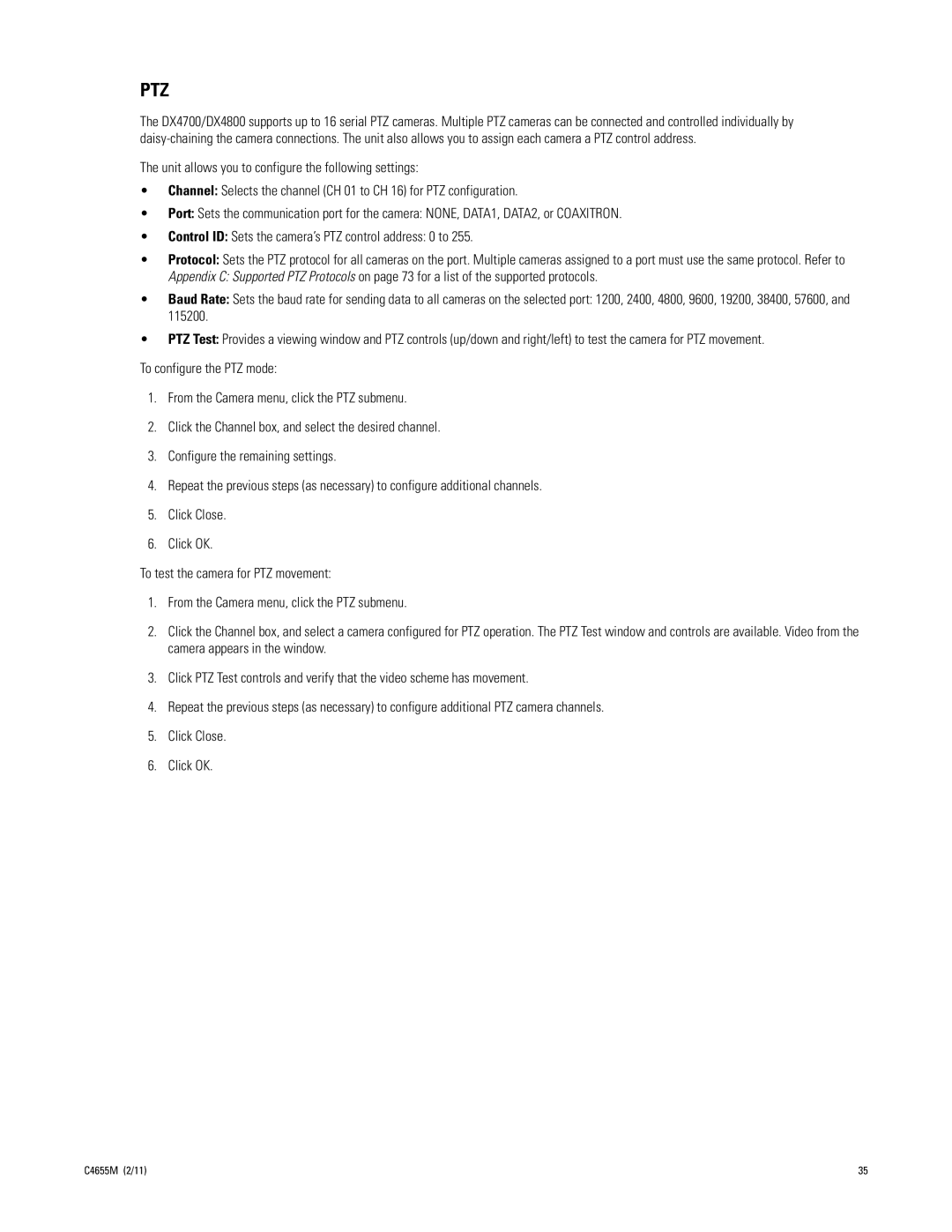PTZ
The DX4700/DX4800 supports up to 16 serial PTZ cameras. Multiple PTZ cameras can be connected and controlled individually by
The unit allows you to configure the following settings:
•Channel: Selects the channel (CH 01 to CH 16) for PTZ configuration.
•Port: Sets the communication port for the camera: NONE, DATA1, DATA2, or COAXITRON.
•Control ID: Sets the camera’s PTZ control address: 0 to 255.
•Protocol: Sets the PTZ protocol for all cameras on the port. Multiple cameras assigned to a port must use the same protocol. Refer to
Appendix C: Supported PTZ Protocols on page 73 for a list of the supported protocols.
•Baud Rate: Sets the baud rate for sending data to all cameras on the selected port: 1200, 2400, 4800, 9600, 19200, 38400, 57600, and 115200.
•PTZ Test: Provides a viewing window and PTZ controls (up/down and right/left) to test the camera for PTZ movement.
To configure the PTZ mode:
1.From the Camera menu, click the PTZ submenu.
2.Click the Channel box, and select the desired channel.
3.Configure the remaining settings.
4.Repeat the previous steps (as necessary) to configure additional channels.
5.Click Close.
6.Click OK.
To test the camera for PTZ movement:
1.From the Camera menu, click the PTZ submenu.
2.Click the Channel box, and select a camera configured for PTZ operation. The PTZ Test window and controls are available. Video from the camera appears in the window.
3.Click PTZ Test controls and verify that the video scheme has movement.
4.Repeat the previous steps (as necessary) to configure additional PTZ camera channels.
5.Click Close.
6.Click OK.
C4655M (2/11) | 35 |
